
Hiking
What is hiking
What is hiking
Hiking is an energetic walk along marked or unmarked trails in a natural environment. It's a pleasant form of exercise and recreational activity that can help boost physical and mental well-being. The best thing about hiking is that most of its forms do not require any special equipment, therefore making it an economical activity. Hiking is also a popular sustainable travel activity that provides participants with a glimpse into local culture and changing landscapes.

Source: Toomas Tartes on Unsplash
Frankly, anyone can go on a hike. Hikes can be as short as 45 minutes or even take place over a few days, with overnight stops along the way. Hiking can be done with kids as well as pets (where permitted) and can cover a variety of destinations. Moreover, trails are available in various difficulty levels for both beginner and expert hikers. While national park hikes are some of the most popular, you can also hike to forts, through forests, and around lakes.
There are several forms of hiking, one of them being trekking. However, trekking is a more strenuous and longer form of hiking. Several people are credited for inventing hiking or walking for pleasure, including Francesco Petrarca in the 14th century and Conrad Gessner in the 16th century.
The growing popularity of hiking as an outdoor activity
The growing popularity of hiking as an outdoor activity

Hiking, trekking, or walking for pleasure have always been popular activities, but they have seen a strong resurgence since the pandemic, when remote working became the norm. Hiking is a great way of stepping out of the home office and disconnecting from technology, albeit for a few hours. It also helps promote physical and mental well-being while bringing hikers to new places.
Hiking gained popularity in the US following the end of World War II since it was an affordable form of recreational activity. Today, millions of Americans hike on well-marked trails across the country.
Industrialization and overcrowding in urban centers also led to people wishing to escape into the countryside for a breath of fresh air. Prominent poets such as William Wordsworth and John Keats were avid hikers who shared their pleasant experiences, leading to more people craving to go on hikes or walks in the countryside.
Types of hiking trails
Types of hiking trails
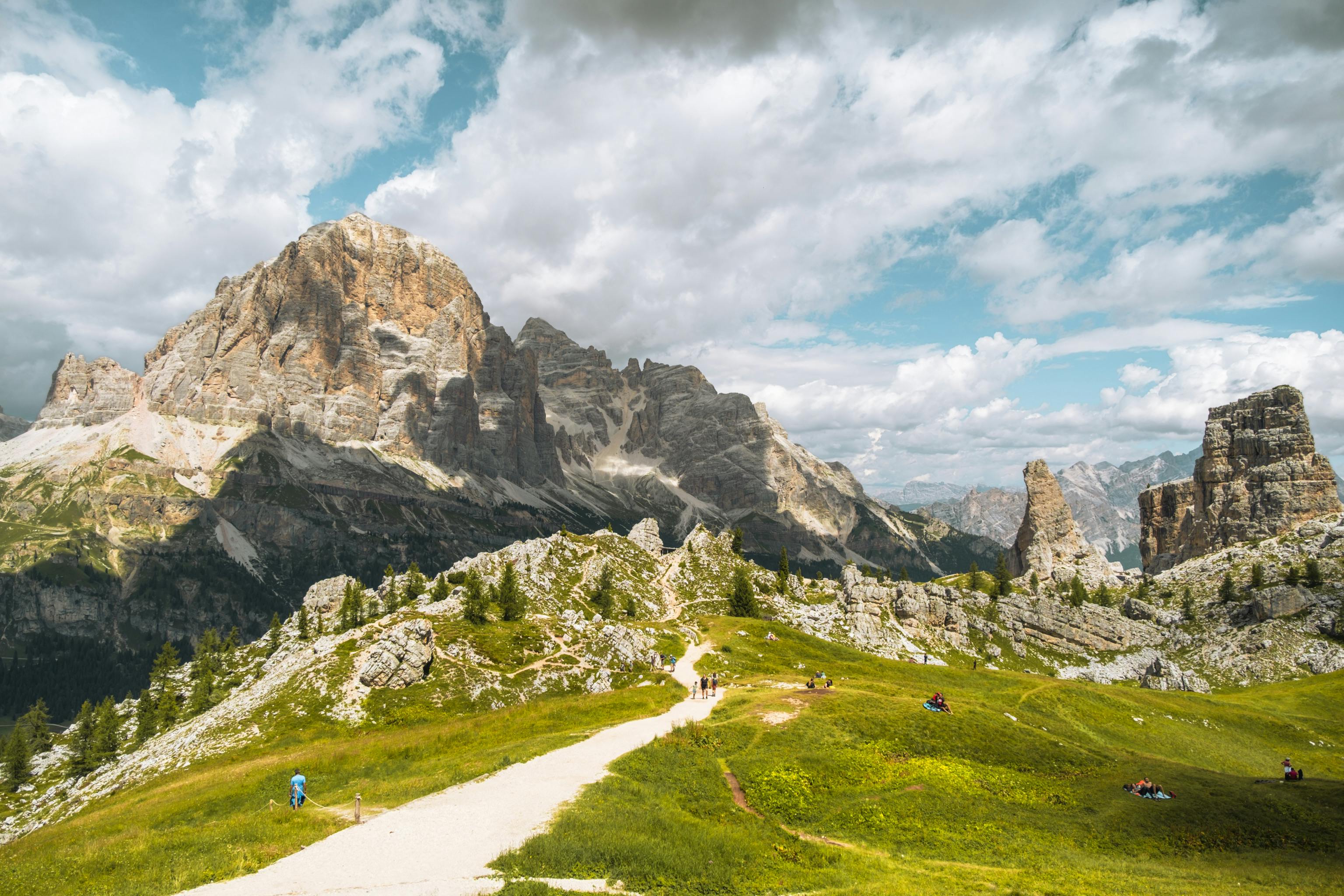
Source: Luca Luperto on Pexels
-
Loop trails
These trails follow a loop pattern to begin and end at the same point. Short loop trails are great for families to experience an area close to home or a holiday destination. Lollipop loops are similar but include a loop off the main trail.
-
Return trails
Sometimes referred to as back-and-forth trails, these trails transfer hikers to the farthest point of the route. After some rest, they follow the same route back to the starting point.
-
Point-to-point trails
These trails start at one point and end at another and can be a sustainable way of getting from point A to point B. These are usually longer trails and would require some form of transport if you wish to return to your start point.
-
Stage trails
Long and challenging hikes are usually divided into stages that make it possible for novice and intermediate hikers to sample a portion of the trail. A stage trail can be completed from start to finish, or hikers can choose to complete particular stages from the starting point. These trails usually do not end near a major city or transport hub. Hikers might have to camp where they find space or stay in a simple trail hut if available.
Since this trail type requires several days to cover, hikers will need to carry a backpack and supplies to last for the duration of the hike.
-
Pack carry trails
These trails are similar to stage trails, but they include campsites along the route. While hikers still need to pack for the hike, it might be possible to purchase some essentials from the campsites.
Types of hiking
Types of hiking
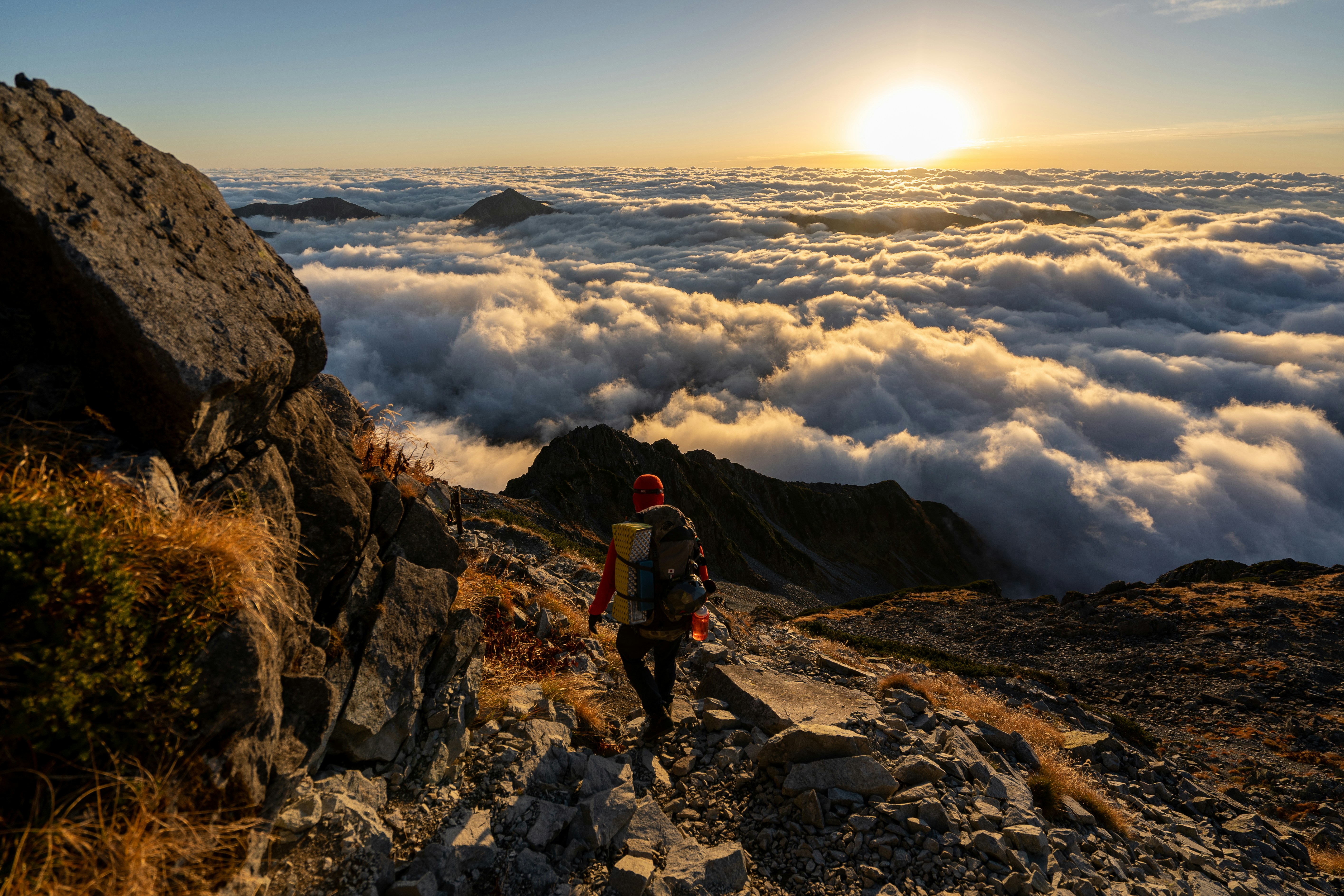
Source: Hayato Shin on Unsplash
-
Trekking
The word trekking is often interchangeably used with hiking, but in fact, it's a longer and more strenuous form of hiking. It takes place over a few days and involves overnight stops along the trail. The trekking path is usually through rough terrains and it involves reaching a particular destination. Mount Everest is one of the most rigorous and popular treks that's on the bucket list of many. Since trekking is more rigorous, it involves planning as well as a certain level of fitness to successfully complete a trek.
-
Thru-hiking
This is a difficult end-to-end backpacking trip along a long-distance trail. It takes place over a few months and can also take months if not years of planning. The Pacific Crest Trail (PCT) is one of the most popular thru-hikes and extends 2,650 mi (4,264 km). The trail stretches from Mexico to Canada and can be attempted in the northbound or southbound direction. This is a well-developed trail, where hikers will find campgrounds and network coverage for the majority of the time.
Hikers need to pack enough food and water when setting out for a thru trail and be prepared to sleep wherever they can on the trail. Sometimes it could be hiking huts, while other times, it might be sleeping under the stars.
-
Swim hiking
This recreational activity combines hiking with wild swimming. Instead of swimming in a water body along the way, the purpose of this hike is to reach a water body. This can be a lake, sea, or even a waterfall. The water body could be the midpoint of the trek from where you head back or it can be just a part of a trek. Make sure you carry a dry kit to store your belongings, which you can change back into after your swim. It's possible to do swim hikes to waterfalls in several national parks in the US such as Great Smoky Mountains National Park. If you're vacationing in Hawaii, there are several waterfall hikes in Kauai.
-
Scrambling
Hikers use their hands and feet to climb rough and rocky terrain during scrambling or rock scrambling. It's a combination of hiking and rock climbing and involves climbing in a crawl-like fashion, relying on your body for support as you ascend steep terrain. Llech Ddu Spur in North Wales is an easy Grade I scramble hike that's recommended for beginners.
-
Glacier hiking
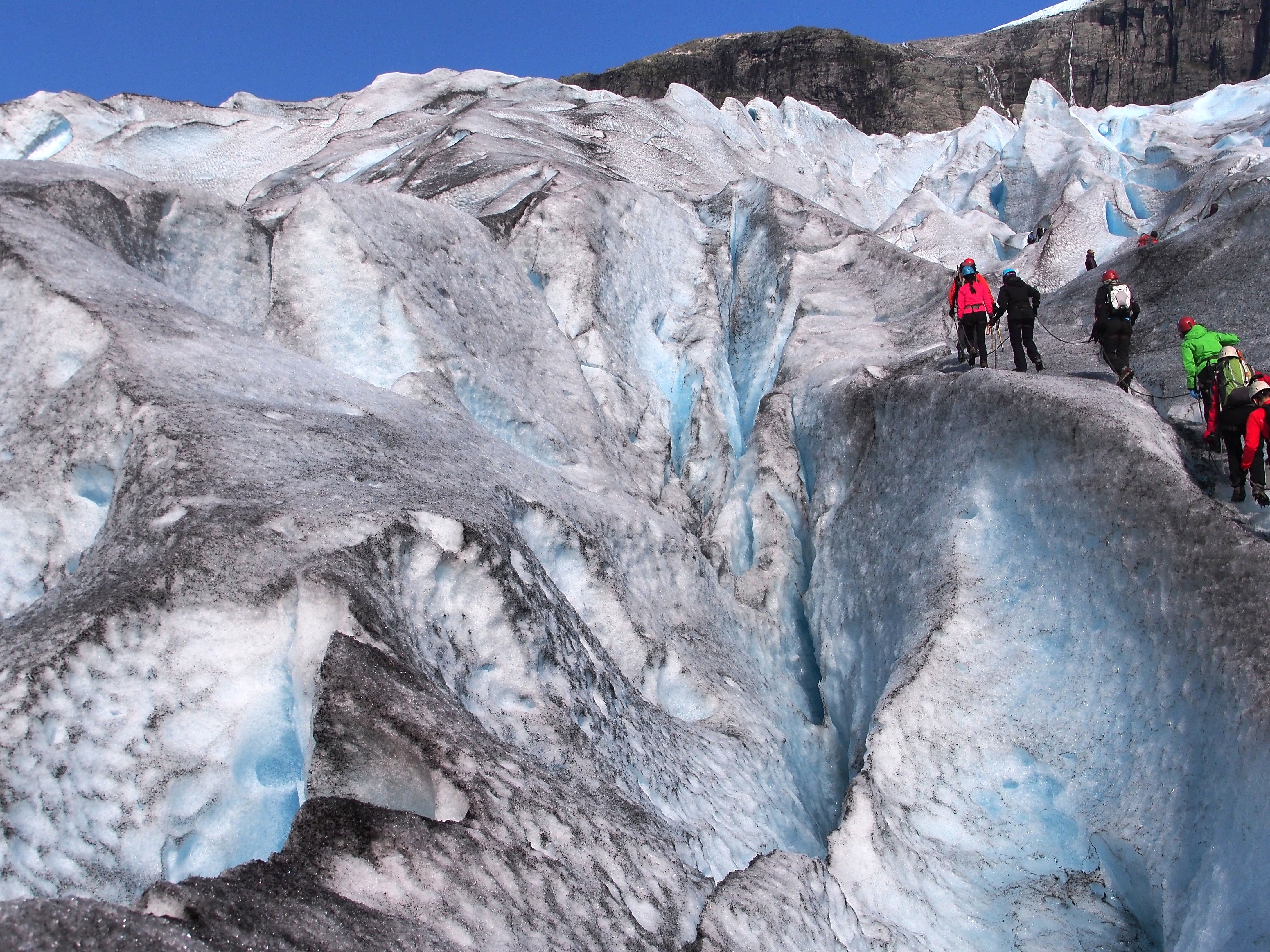
Source: rheins on Wikimedia Commons
This is a difficult form of hiking that involves walking on a glacier using specialized equipment such as an ice ax and crampons. Since these occur in particularly cold regions, which experience low temperatures even during the summer, hikers must dress appropriately to keep themselves warm. Hiking tours are a popular form of tourism in Iceland and include glacier treks such as Solheimajökull glacier. Franz Josef Glacier is a top glacier hike in New Zealand, which is another country known for its adventure sports.
While glacier hiking, it's recommended to have a guide who knows the terrain well. If you're attempting the hike without a guide, make sure to bring a partner since the landscape and weather can turn treacherous.
-
Dog hiking
As the name suggests, this involves hiking with your furry friend. Dog hiking can be a day hike or a longer hike over several days. Hikers need to pack additional snacks/water and gear for their pets. There are several leashed and no-leash hiking trails in the US and Europe that can be explored with your pet. Moreover, there are several hundreds of dog-friendly trails in the Netherlands, including Wandelroute Hoogtepunten Kaapse Bossen, a highly rated 9.2-km long (5.7-mi) looped trail.
-
Summit hiking
In this form of hiking, hikers do a combination of hiking and climbing to reach the mountain summit and are rewarded with panoramic and picturesque views all around. Depending on the height of the mountain, these can be single or multi-day hikes. Mount Visevnik within Triglav National Park is one of the best hiking trails in Slovenia.
-
Short-distance hiking or day hiking
Short day hikes are the perfect way to exercise in nature and can be an excellent way to introduce children to hiking. These can be short early morning hikes or slightly longer hikes that can be completed by the evening. The multi-colored Vinicunca Rainbow Mountain, one of the most famous attractions in Peru, is a popular 6.2 mi (9.9 km) day hiking trail recommended for hikers visiting the country.
-
Long-distance hiking
This type of hiking stretches hundreds of kilometers, can take several days, and will take hikers through varied regions and countries. Long-distance hiking can either be a loop or a destination hike. It's quite popular in the Indian Himalayas. The John Muir Trail is a 340-km (211-mi) trek in the Sierra Nevada Mountains and is one of the top long-distance hikes in California.
-
Circumnavigation hiking
This is a journey that takes hikers around the Earth and has them return to the starting point by walking. The Guinness Book of World Records defines circumnavigation on foot as “having traveled 18,000 miles, and crossed four continents.”
-
Backpacking

Source: Joshua Tree National Park on Flickr
This is a multi-day hike that involves camping in a tent or a basic trail accommodation. Since this form of hiking involves carrying all your clothing and cooking gear, hikers need to do some strength training a few months before commencing on the hike. Backpacking can be an overnight trek or stretch across several months. The longer the hike, the more challenging it's to keep yourself motivated and fit along the route.
-
Bushwhacking
Calling all adventure seekers who want to carve their path! Bushwhacking follows no trail and is essentially a hike in the wilderness, where the hiker needs to cut through branches and thick vegetation to carve a trail path. It's recommended for experienced hikers since it's quite challenging and might involve some level of improvisation when crossing difficult stretches of the terrain.
-
Base camping
If a new and remote camping site is not your cup of tea, then base camping is the perfect solution. This can be done solo but generally involves a large group that sets a base camp that may include a kitchen and washroom facilities. Hikers go on a new back-and-forth hike every day and return to the safe and familiar surroundings of the base camp for the night. This can also be an excellent introduction to backpacking and multi-day hikes. If it's your first base camping adventure, this guide will help point you in the right direction.
-
Peak bagging
A high level of fitness, endurance, and strength is necessary if you're thinking of trying peak bagging. It refers to summiting several mountains or hills as part of one hike. These hikes can be concentrated on a geographical location such as the Sacred Mountains of China, but could also be spread across the globe as with the Seven Summits hike. Peak bagging is only recommended for experienced hikers who wish to complete a particular list of hikes.
Tips for beginner hikers
Tips for beginner hikers
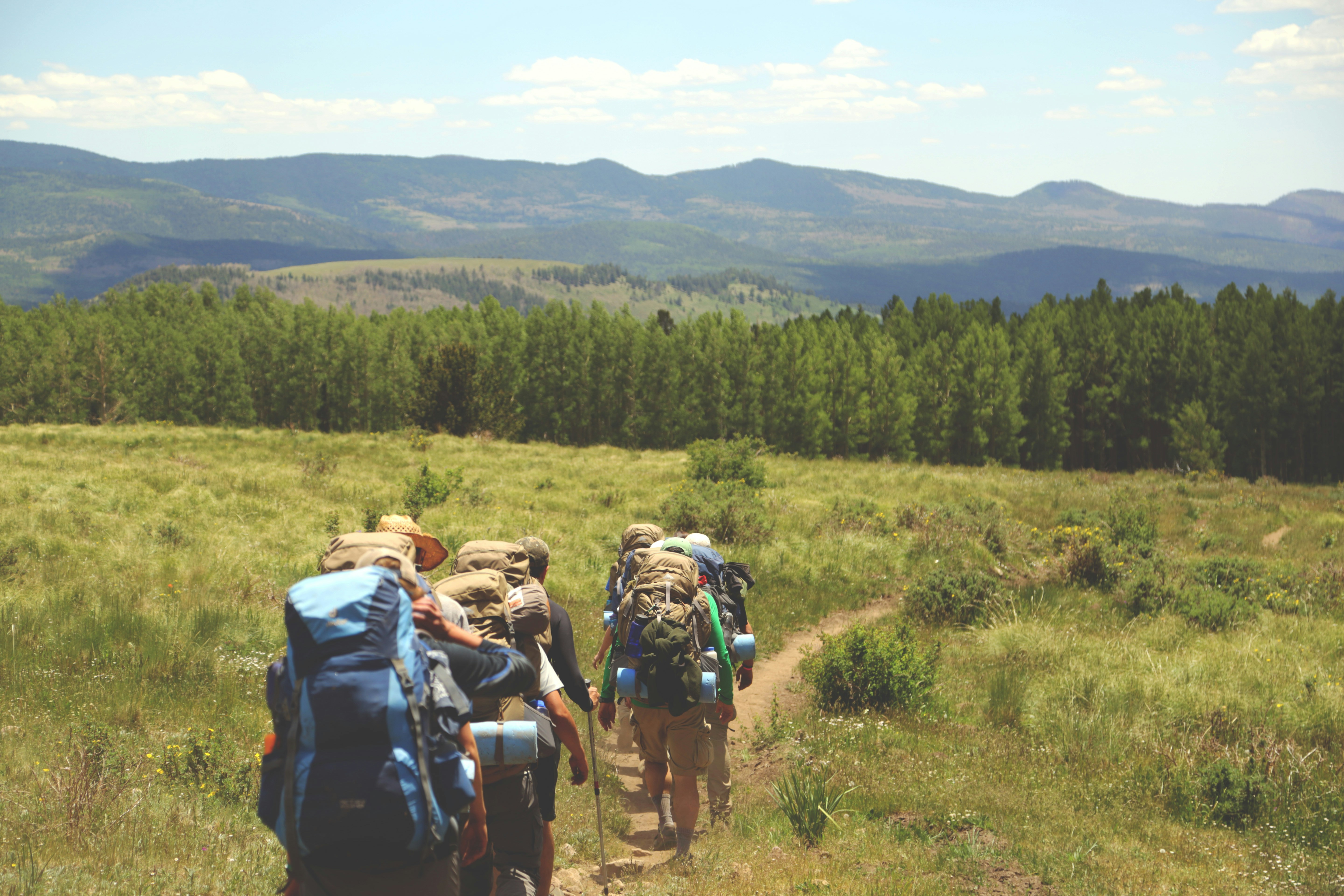
Source: Austin Ban on Unsplash
-
Find a hiking partner
Unless you're hiking in a large city park such as those in Berlin or Toronto, it's recommended to hike with a partner, especially for novice hikers. A hiking partner or buddy can help motivate and encourage you if you get tired or look out for you in case of an emergency. They can also help carry the load if you're planning to camp.
-
Choose a hiking destination
It's easy to find official hiking trails and pedestrian paths no matter where you are. Hikers need to choose a trail depending on the amount of time at hand and the hike difficulty level they can manage. Distance of the trail is also a factor sometimes unless it's a smaller hike for an intermediate-level hiker.
If you're attempting a summit hike, be sure to check the altitude or Meters Above Sea level (MASL) in hiking speak. Hikers will also need to take into consideration elevation gain, as the sudden increase in altitude can lead to Acute Mountain Sickness (AMS) due to a shortage of oxygen.
-
Check your fitness level
A basic level of fitness is required even for an easy-level trek. However, when you're planning to hike a stage trail or attempt a long hike, it could mean months of strength and endurance training. You need to prepare your body to carry the additional weight of the backpack, sometimes through rough and uneven terrain, and deal with altitude sickness, among other hardships.
-
Get proper hiking gear
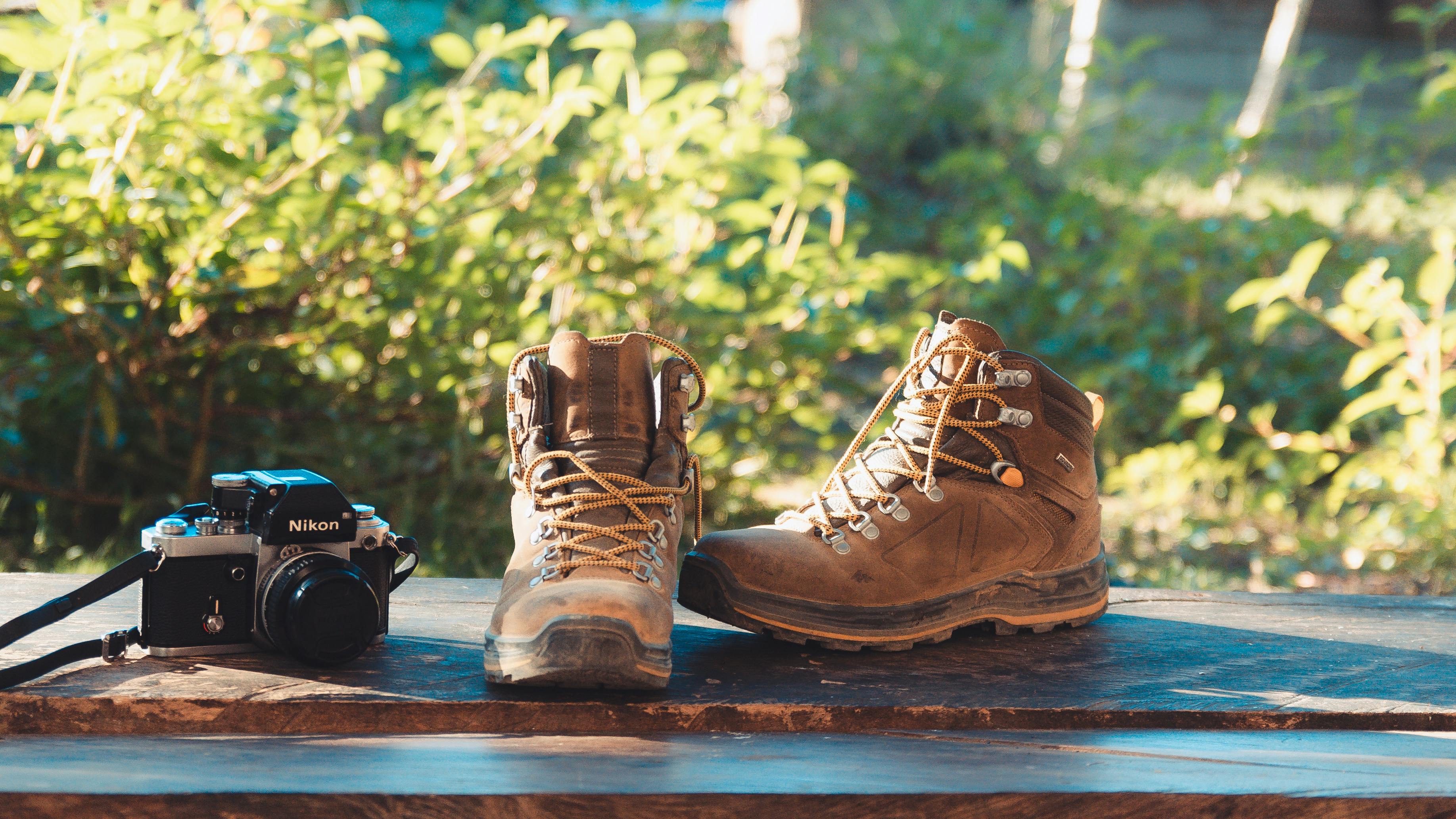
Source: Robert Forever Ago on Pexels
One of the first things a hiker needs to invest in is footwear. These can be ankle boots or shoes, trail runners, or waterproof hybrids. These are comfortable and durable choices that help protect the feet and in some instances the ankle. While regular sports shoes might be suitable for a short hour-long hike, they're not recommended for day hikes and longer trails.
Hikers need to dress for the weather conditions as well and always carry trail snacks and water. A GPS is also handy if you're attempting a long hike. Additionally, sunscreen and a first-aid kit should always be a part of your gear.
-
Take rest when needed
It's important to pace yourself and set a speed that you're comfortable with. Remember to keep hydrating and rest when needed. Ascending steep hikes slowly is also a great way to avoid altitude sickness. Hiking is not a competitive sport, and hikers can take their time in completing the trail.
-
Follow marked trails
Unless you're the Bear Grylls of hiking, always stick to marked trails. If you're an experienced hiker who has undergone survivalist training, you could attempt glacier hikes or bushwhacking. However, it's still recommended to take a guide or hike with a trained partner.
-
Ensure your safety
When on the trail, hikers should always be alert and aware of their surroundings. Be well-prepared and -informed about the trail. If possible, do a basic first-aid course before going on a long hike that could have remote patches. Remember that each hiker is responsible for their own safety, even when hiking in groups.
Hikers should also leave a detailed itinerary with someone back home with their approximate location for each day of the trek and the expected date of return. This could help the latter raise an alarm with local authorities in case of an emergency. When possible, update someone daily about your location. You must also always carry a GPS tracker and a Personal Locator Beacon (PLB) when attempting thru-hikes such as the Appalachian Trail.
-
Leave no trace
Hiking is a sustainable form of recreational activity that helps raise awareness of the natural surroundings. The permit fees help in maintaining and conserving the trails and surroundings. Hikers should carry minimal plastic packaging and clean up after themselves instead of littering on the trails. If hiking with pets or children, always remember to carry poop bags that you can dispose of later.
Tips for hiking with your kids
Tips for hiking with your kids

Source: Marleen Mulder-Wieske on Unsplash
-
Carry your child safely
If you're attempting a hike with an infant or toddler, always carry them in a safe and appropriate hiking backpack suitable for their age. Make sure to test it out and practice before you attempt to carry your child in the wild. Never try to hike with your child on your shoulders or carry them on your hip as it may be dangerous for both of you. Some fitness training might also come in handy when hiking with small children.
-
Choose a kid-friendly route or trail
Hiking is not just for adults and can be a wonderful family activity with children as young as four years of age. If you're planning a family vacation to the island of Oahu in Hawaii, Makapu’u Point Light House Trail is a family-friendly return trail that can be considered. With slightly older children, it may be possible to head down to the tide pools for a swim.
When hiking with children, changing your daily trail coverage goals is important. In most instances, the pace and endurance of the child should help in determining the pace of the hike.
-
Find a destination that appeals to your child
Children can get moody, so pick a destination that would be interesting and appealing to your child. It could be a coastal or beach trail where they can spot ships or a hike up a fort where you can regale them with stories.
-
Keep an eye on your child at all times
Always be aware of where your child is and never let them wander off. Family-friendly hikes usually do not go through areas with heavy wildlife sightings. Nonetheless, always ensure that your children are within a few feet of you where you can keep an eye on them.
-
Set some ground rules
When traveling with small children, it's imperative to set ground rules. Some of these can be that they always need to remain in sight, cannot wander off without informing their parents, and never consume wild fruits and berries.
-
Plan fun activities
When hiking with adults, it can be a goal-oriented activity. You may plan a certain number of miles to cover per day or complete the trail in a given amount of time. However, when hiking with children, fun activities need to be integrated into the plan. This could be a picnic at the end of the trail for a short hike or a stay at a unique cabin during a longer hike. Children can also be taught about plants and animals and be tasked with spotting and marking them on a sheet for a reward at the end of the hike.
-
Plan enough breaks
Since children set the pace for family hikes, make sure to take breaks according to their needs, as well. Ensure they're snacking to maintain their strength and energy and that they're adequately hydrated.
-
Capture moments
Hiking can be a special family bonding activity that you do over the weekends. However, it could also turn into something you do on every vacation, thus making it a family tradition. Make sure to capture these memories through photographs, so that children can show them to their friends and in a way promote this sustainable form of travel. If the children are older, they can also be asked to keep a hiking diary or journal to capture their personal experiences.
Tips for hiking with your pets
Tips for hiking with your pets
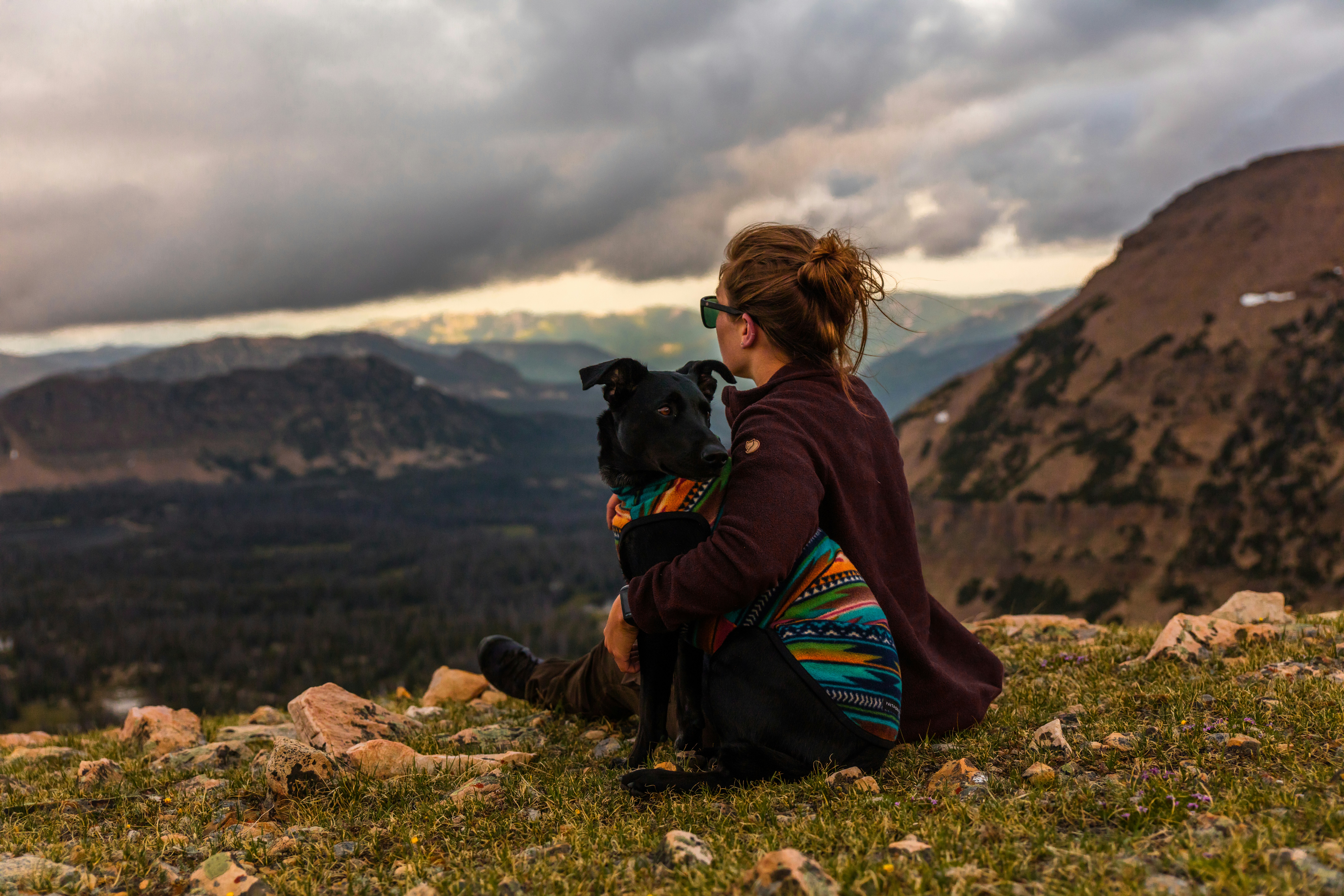
Source: Patrick Hendry on Unsplash
-
Check trail regulations
Before you decide on a trail, make sure that it allows pets. National Park Service and local state parks in the US maintain detailed pages of marked trails. These include information regarding leashed and no-leash trails and rules regarding pets on campgrounds.
-
Check the weather
Check the weather conditions in the month that you're planning your hike and make sure that it's not too hot for your dog. Since they're at a higher risk of overheating, remember to take breaks and bring snacks and water for your pet, as well.
-
Ensure your pet is well-trained
Busy trails can be overwhelming for a dog who is not trained or is not used to being around people or other pets. Always keep your dog on a 6-ft (1.8-m) leash even in a no-leash zone when you're on a popular trail. Keep an eye on your dog to spot any aggressive behavior. If your pet does not react well to new places and people, it might be better to leave them at home or try an isolated trail instead. The hiker is in charge of ensuring the safety of their pet as well as other hikers.
-
Check your pet’s fitness level
Make sure that your pet is fit to physically keep up with you during the trek. Small and old dogs might not be suited for rough terrains or long treks as they might cause injuries. Also, remember to take your pet to the vet before you hike and ensure that their vaccinations are up to date.
-
Respect the space of other hikers
Not everyone on the trail will be comfortable with dogs in their path. Make sure to respect the space of other hikers and do not allow your pet to step too close to them or get in the way.
-
Stay safe around wildlife
You're responsible for the safety of your pet and yourself. Remember to keep your pet away from wildlife as they could startle the latter or get scared themselves, which may lead to an unpleasant experience. Pets are also at risk of receiving and transferring diseases from and to wild animals.
-
Pick up after your pet
No one wants to be stepping on your pet's waste while on the trail and have the scent follow them around for hours! Always carry a poop bag and dispose of the waste later. To maintain the beauty and hygiene of the trail, hikers should always follow the ‘leave no trace’ policy.
What to pack for your hike
What to pack for your hike
|
Day hikes |
Multi-day hikes |
|
Small backpack to carry essentials |
Sturdy hiking backpack that can hold all your supplies |
|
Weather-appropriate extra clothing if going for a swim hike or traveling with kids |
Weather-appropriate clothing, including light fleece for the night during summer and base layers and jackets for winter hikes |
|
Protein-rich snacks |
Enough food to last a long hike |
|
Water and hydration packs |
Water and hydration packs |
|
Navigation tools such as a map, GPS tracker, PBL |
Navigation tools such as a map, GPS tracker, PBL |
|
First-aid kit |
First-aid kit |
|
Multi-purpose knife |
Multi-purpose knife |
|
Sun protection such as hats, sunscreen, and sunglasses |
Sun protection such as hats, sunscreen, and sunglasses |
|
Bear spray |
Bear spray |
|
Battery pack for phone |
Battery pack for phone |
|
Flashlight or headlamp for night hikes |
Flashlight or headlamp for night hikes |
|
Matchbox and fire starter |
Matchbox and fire starter |
|
Tent, sleeping bag, and camping gear, which includes cooking supplies |
How to stay free from wild animals on your hike
How to stay free from wild animals on your hike

Source: Yansi Keim on Unsplash
-
Hike in a group
It's recommended to hike in a group, especially for beginners to ensure safety in case of an emergency. Strength in numbers is also helpful in case of sudden weather changes and wildlife sightings.
-
Make noise
If you're hiking alone or if the trail is known for wildlife sightings, make noise while you hike so that it alerts wildlife and scares them away. This is especially helpful when hiking in remote areas or on forest trails.
-
Avoid feeding or petting
Never interact with wildlife, and for your safety, under no circumstance should you feed or pet them. There have been instances of wild animals getting infected by humans and pets or hikers getting attacked by animals even when just trying to feed them.
-
Stick to marked trails
Always stay on marked trails and do not venture out to examine animal habitats. You would be disturbing their scent and in many instances, it can lead to them abandoning their home because of an unfamiliar scent.
-
Know how to react
Research and be informed before you set out on your hike. Always be prepared and know the best way to react if you encounter a wild animal. Remember to stay calm, make yourself appear bigger, and wave your arms and hiking poles while making noise. For some animals, it might work better if you simply stay motionless, keep eye contact, and let them pass undisturbed, instead of startling them by starting to run.
-
Carry bear spray
When hiking in the wilderness or on long treks known for bear sightings, always carry bear spray for your safety.
-
Keep your pet calm
Make sure your pet is properly trained and responds to cues to keep calm. Keep an eye on them or put them on a leash so that they don't wander off the trail and accidentally startle or provoke a wild animal.
Perks of hiking
Perks of hiking

Source: Laurentiu Morariu on Unsplash
-
Immersing yourself in nature
Hiking is the perfect way to disconnect from technology and spend some time reconnecting with yourself and your family amidst nature without any distractions. It leaves one feeling refreshed and energized after spending hours if not days indoors.
-
Affordable recreational option
Hiking is an economical activity and short day treks do not even require purchasing any specialized equipment or clothes. Regular breathable clothes that are in your closet can be worn during the trek. Other accessories such as sunscreen, sunglasses, and a first-aid kit, for example, are also available in every household.
-
Having an enjoyable workout
Hiking is also an excellent form of physical exercise that can help build strength and stamina if done regularly. Instead of walking and running on a treadmill, skip the gym membership fees and bring your workout outdoors. Regular exercise keeps one healthy and lowers the risk of heart disease. Since you're relying on both your body and mind during a hike, it helps to increase your balance as well as your sense of awareness.
-
Boosting your mental health
Spending time away from screens and technology and in nature can have positive effects on your mental health. Since hiking is not a competitive activity, the only person you need to impress is yourself!
-
Building community
As you build an affinity towards hiking, you can join an online group or a local hiking community. This can help build your network and introduce you to new trails. Famous trails usually have their own associations or groups that are open to everyone to join. These groups can be used to gain more knowledge and be aware of the challenges of the trail. They can also be used to find a hiking partner or group.
Moreover, joining a community encourages hikers to participate in community development programs. This could include cleanups or maintenance along the trail or providing basic educational equipment to remote communities.
-
Experiencing living in the wild
Since hiking takes place in nature, finding hotel-level facilities on the trail is not always possible. Hiking teaches one to travel and live with basic amenities, especially when backpacking on thru hikes or base camping.
-
Environmental awareness
Hiking makes one more aware of the environment and how it's essential to protect and conserve the natural surroundings. It makes people appreciate nature and instills in them the need to protect natural habitats and endemic flora and fauna. Hikers can also participate in tree planting or clean-up drive either during the hike or at a later date with proper permits.
Top hiking destinations around the world
Top hiking destinations around the world
Hiking is a wonderful recreational activity that can be undertaken not just close to home but also while traveling. It's also a sustainable travel activity that offers travelers a chance to explore a destination away from its tourist jaunts. Let's take a look at some of the top hiking destinations around the world.
Top hiking destinations in the United States

-
Grand Teton National Park, Wyoming
With over 250 mi (402 km) of trails, Grand Teton National Park is one of the top hiking destinations in the US. Novice hikers can opt for a small 2.5-mi (4.02-km) hike at Colter Bay or a much longer 40-mi (64.37-km) Teton Crest Loop. Rangers and the Visitor Center at the park can also help hikers to the best trails depending on their level of expertise and time at hand. Black and grizzly bears live in the park, so hikers should always travel in a group, make noise while hiking, and remember to carry bear spray.

-
Natural Bridge, Virginia
Natural Bridge is a community based around a geological formation once owned by Thomas Jefferson. Today, it forms a part of the Natural Bridge State Park, which offers several easy to moderate-level treks. The Monacan Trail is a moderate 3.3-mi (5.3-km) trek, where hikers can experience a variety of landscapes in a short span. From April to November, hikers can also visit a re-creation of the Monacan Indian Village.
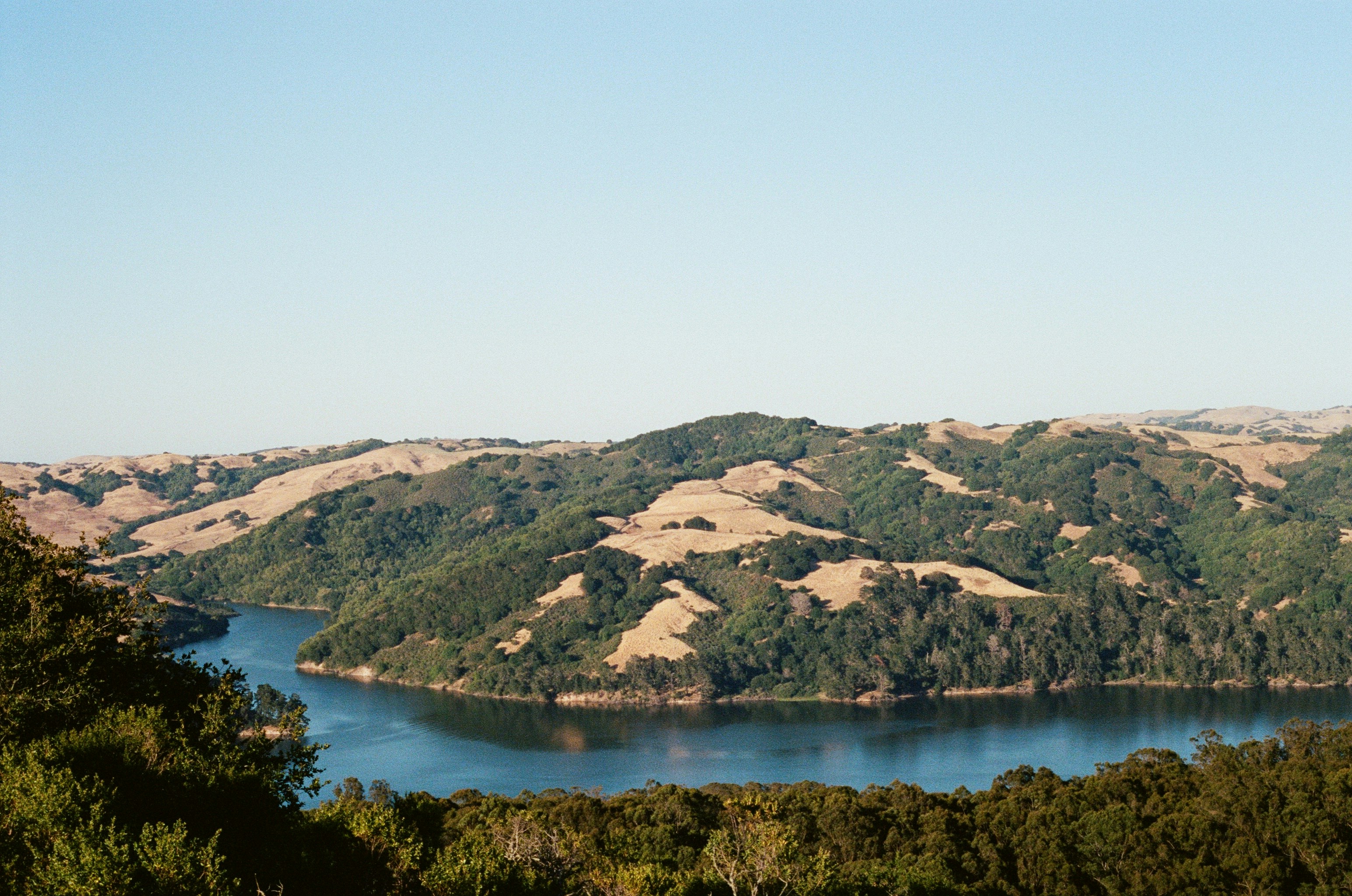
Source: Siddharth Bhogra on Unsplash
-
Berkeley, California
Berkley might be most famous as an education hub, but it also offers a variety of hikes and trails that students can explore to de-stress. The Vollmer Peak Trail is a relatively short summit trail that follows a forest trail. The trails near Berkeley can also be attempted by families and are a great way to spend the weekend surrounded by nature.
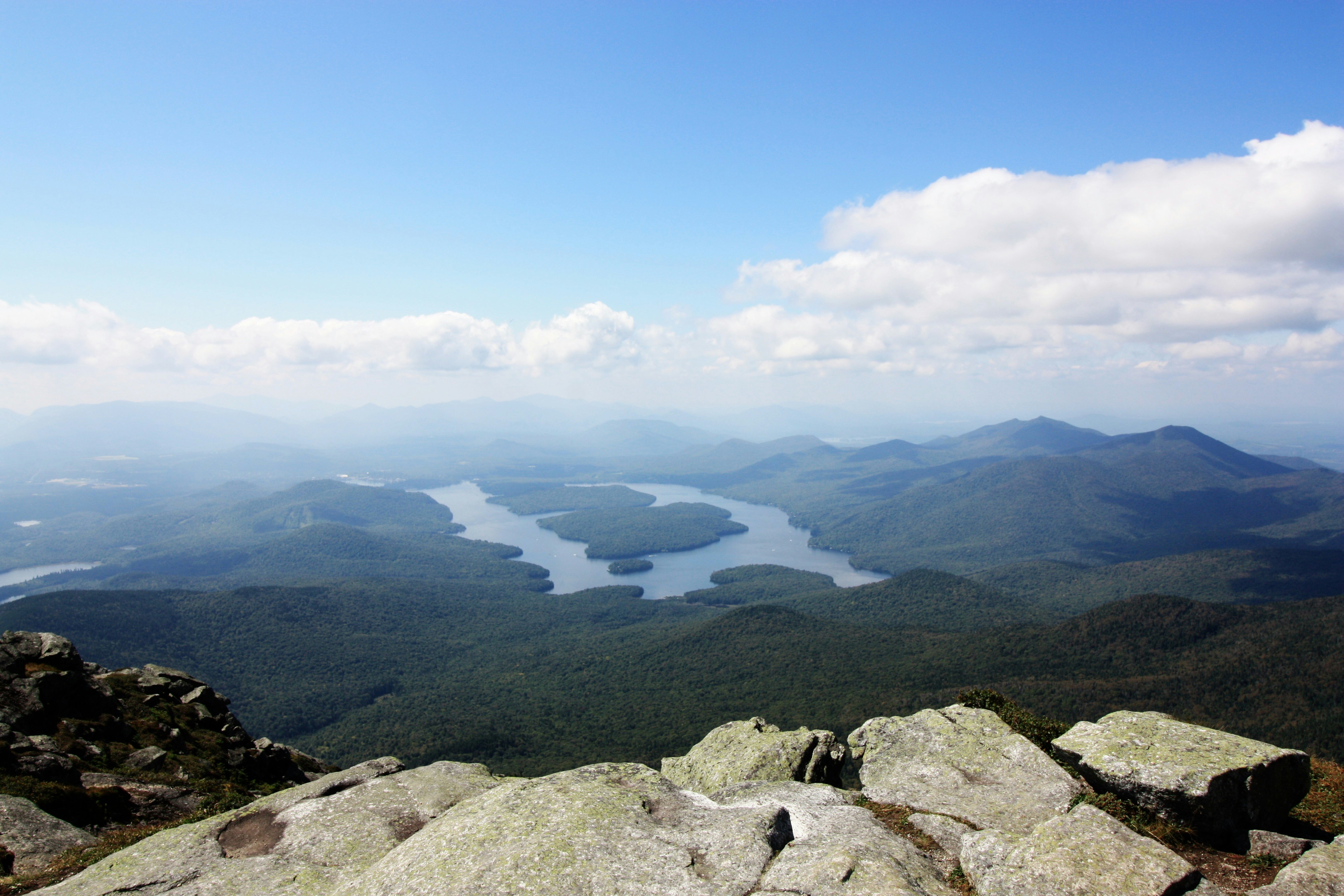
Source: Susan Jones on Unsplash
-
Lake Placid, New York
The small town of Lake Placid is a wonderful destination for outdoor activities, including amazing hiking and trekking spots. The 217-km (135-mi) Northville-Lake Placid Trail (NPT) passes through Adirondack Park and the Adirondack Mountains and takes 10 days to complete by experienced trekkers. It's possible to do swim hikes along the Brewster Peninsula Nature Trails. Mountain biking and family picnics can also be planned along this trail.
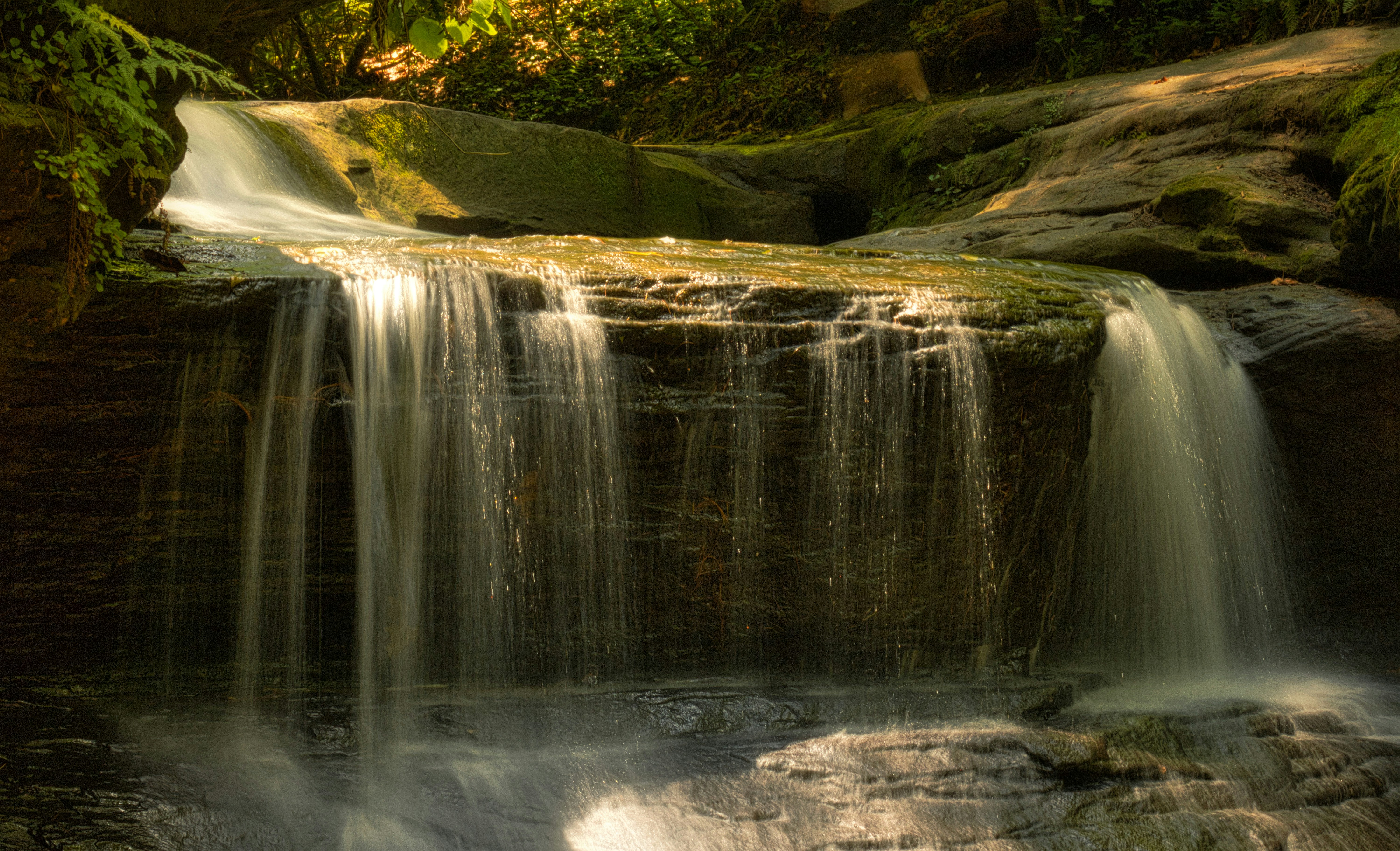
-
Red River Gorge, Kentucky
This natural canyon system along the Red River is a great choice for families as well as experienced hikers to explore. The hiking and trekking spots in Red River Gorge allow leashed dogs on the trail. The unmarked trails offer experienced trekkers a chance to bushwhack in the wild. It could also be possible to combine treks with kayaking and bird-watching here. The Indian Staircase Trail is a popular 4.7-km (2.9-mi) loop trail that's accessible around the year.
Top hiking destinations in Canada
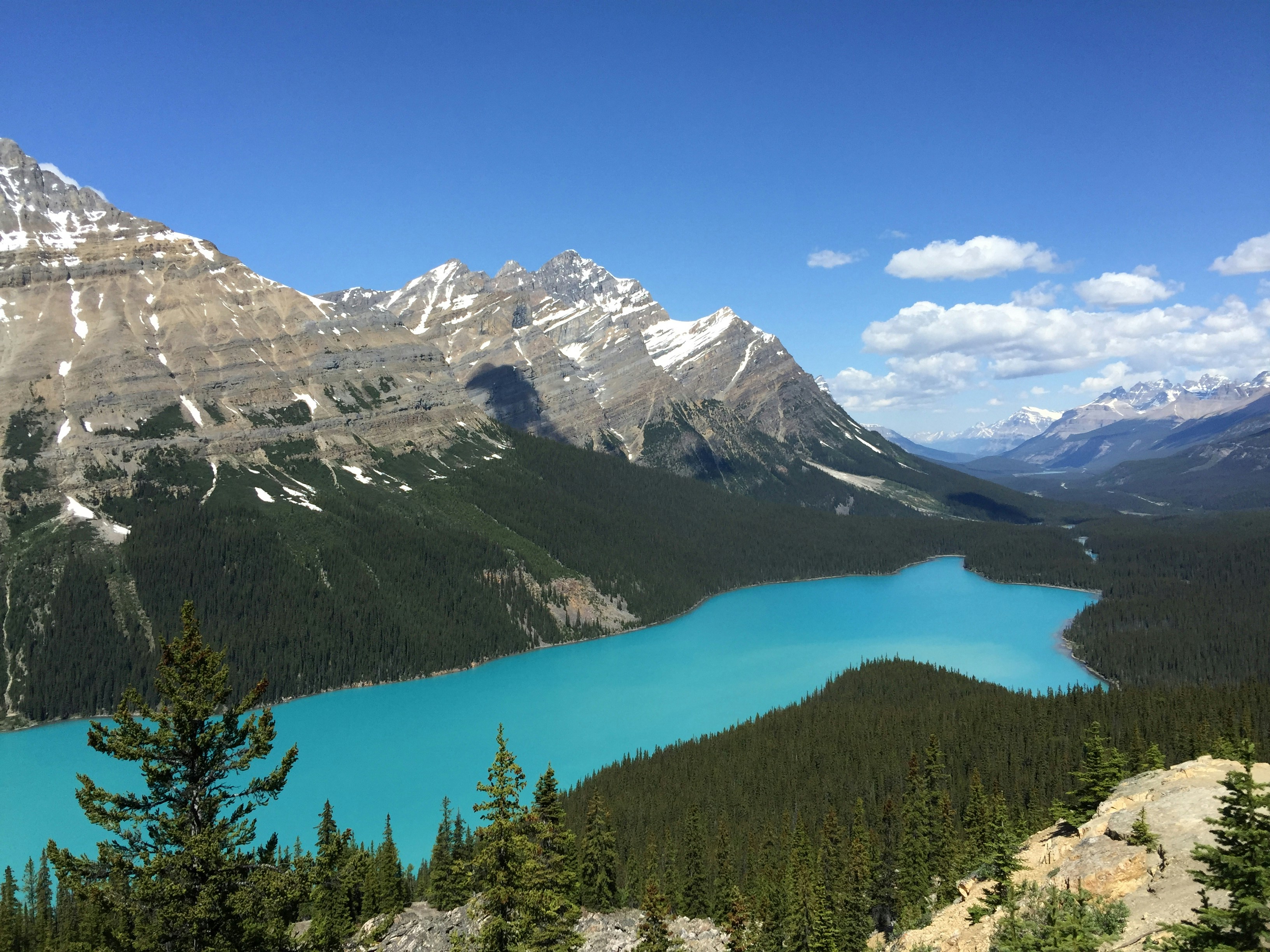
Source: Kaiwen Zhao on Unsplash
-
Jasper, Alberta
This mountain town in the Canadian Rockies is a quiet and serene destination that can be visited year-round. Hiking and trekking trails in Jasper are some of the most scenic places in Canada and include Jasper National Park. Valley of the Five Lakes is a lollipop looped trail that takes approximately one and a half hours to complete. Leashed dogs are welcome on this trail. Experienced trekkers can also opt for the point-to-point 48.1-km (29.8-mi) Skyline Trail, which is a multi-day trek. It's a popular trail for backpackers and campers, so even solo hikers will feel safe along the route.
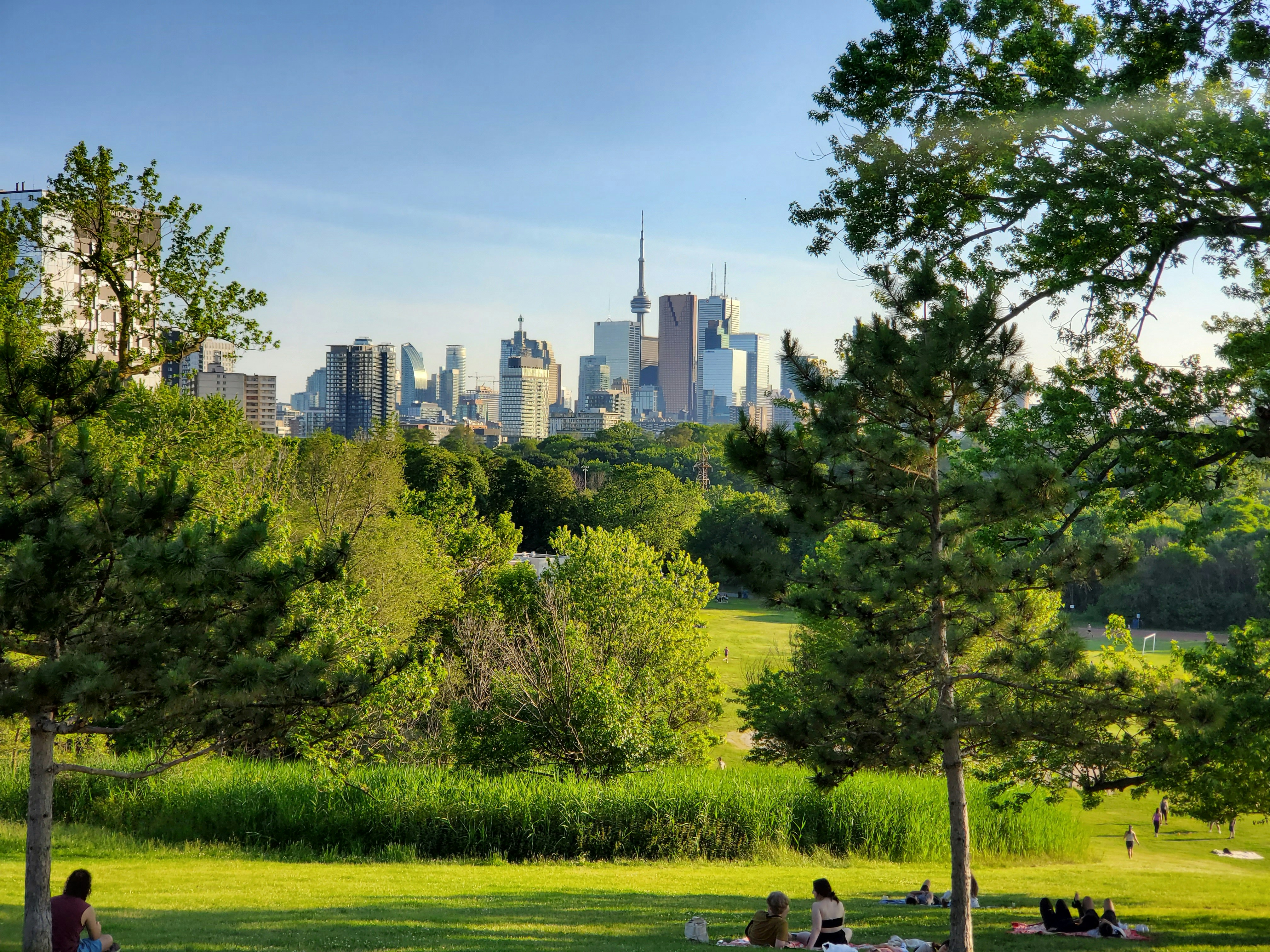
Source: James Thomas on Unsplash
-
Toronto, Ontario
Toronto is one of those few cities that offers both urban and natural hiking and trekking trails for locals and visitors. Glen Eagles Vista Trail in Rouge National Urban Park is just a 600-m (1,968-ft) route. The park also includes Toronto Zoo and several other trails that follow along the Rouge River. Moreover, Don River Valley Park offers an extensive trail system that's interconnected to numerous parks and includes walks through an urban forest.
.jpg)
Source: Lesly Derksen on Unsplash
-
Whistler, British Columbia
During the winter, this place is one of the most popular skiing destinations in North America, and during the summer, it attracts hikers. Hiking in Whistler is one of the best ways to explore this gorgeous side of Canada. Ancient Cedars Trail is a return trail that takes less than two hours to complete. Hikers can bring leashed dogs on this trail. If you're looking to camp overnight, then Black Tusk Trail is a great option. This trail is open around the year, with hikers camping along Garibaldi Lake.
Top hiking destinations in Europe

Source: Yves Alarie on Unsplash
-
Edinburgh, Scotland
Hikes are sometimes referred to as walks in Scotland and are a sustainable way of discovering the capital city of Edinburgh and surrounding areas. Arthur’s Seat is one of the most popular hikes in Edinburgh and follows a looped trail to reach the summit of an extinct volcano. Moreover, Telford Path and Blackhall Path are urban trails that are popular with hikers and cyclists.
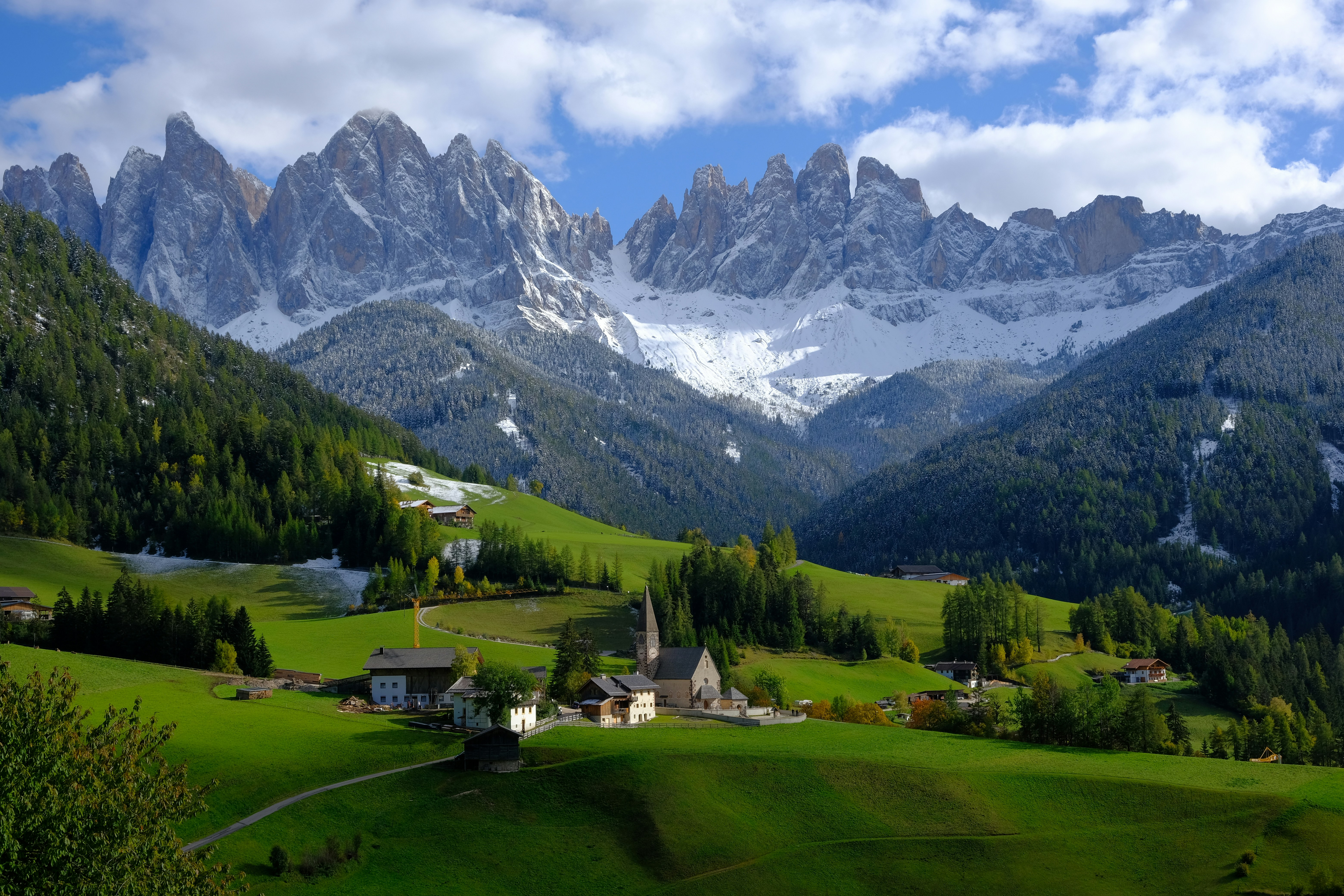
Source: Stefano Bazzoli on Unsplash
-
Dolomites, Italy
Most people associate Italy with historical attractions in Rome, the canals of Venice, and the fashion houses of Milan. As such, the Dolomites in Northeastern Italy are usually skipped by tourists. Visitors should get off the tourist trail and explore the hiking and trekking spots in the Dolomites. This UNESCO World Heritage Site offers several options for day hikes through meadows, mountains, and other gorgeous natural landscapes.
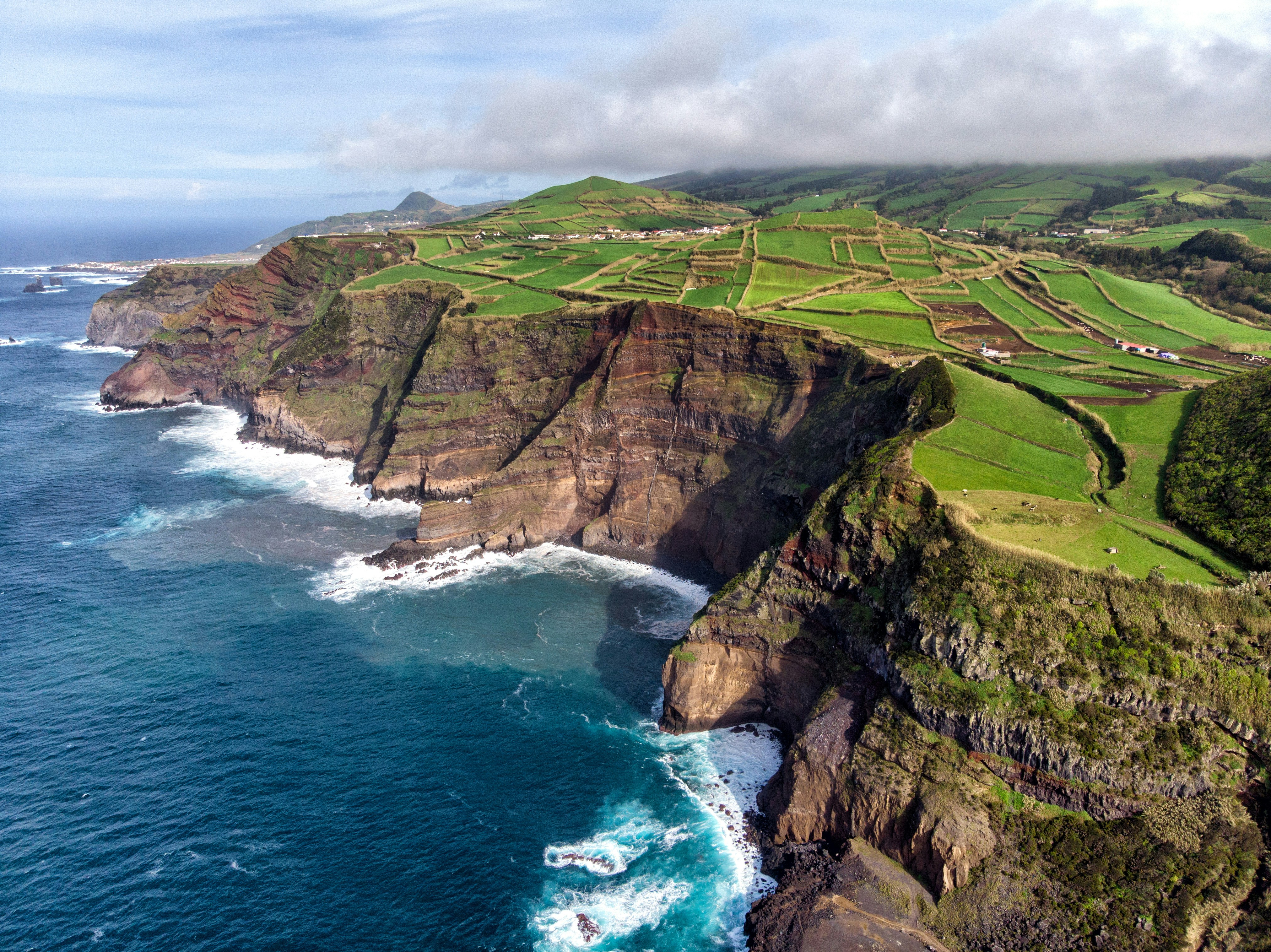
Source: Yves Alarie on Unsplash
-
Azores, Portugal
Located off the Western coast of Portugal, the Azores Archipelago is another World Heritage Site that offers numerous hiking trails. If you're an experienced hiker set on ticking off the highest summit climbs in each country, Ponta do Pico on Pico Island should be on your list for Portugal. Since these islands are not heavily populated, visitors can also plan casual coastal urban hikes to get a feel of each island.
Top hiking destinations in Asia

Source: Yuri Shirota on Unsplash
-
Hokkaido, Japan
Hokkaido is both the northernmost island and prefecture in Japan. It's one of those places that are popular with tourists in all seasons and offer a variety of things to do no matter what time of the year you visit. With multiple mountains in the area, such as Mount Shari and Mount Meakan, it's an excellent destination for peak bagging. The summits here also include active volcanoes, so taking some precautions is advised.

Source: Mauro-Fabio Cilurzo on Unsplash
-
Bali, Indonesia
The island of Bali is one of the top tourist destinations in Asia and offers a mix of cultural, natural, and purpose-built places to visit. This destination has been attracting digital nomads long before workations were trending. Depending on your level of expertise and the members of your traveling group, you can pick from a variety of hiking trails in Bali. Mount Agung is the tallest mountain and an active volcano where hikers can experience night trekking. Hikers reach the summit at around 6am to watch a glorious sunrise and snack on some packed food before descending. Mount Batur is another popular night trek to check out an active volcano.
However, if you prefer your hikes in the morning, then you can trek through Ubud or discover the Sambangan Secret Garden trek.
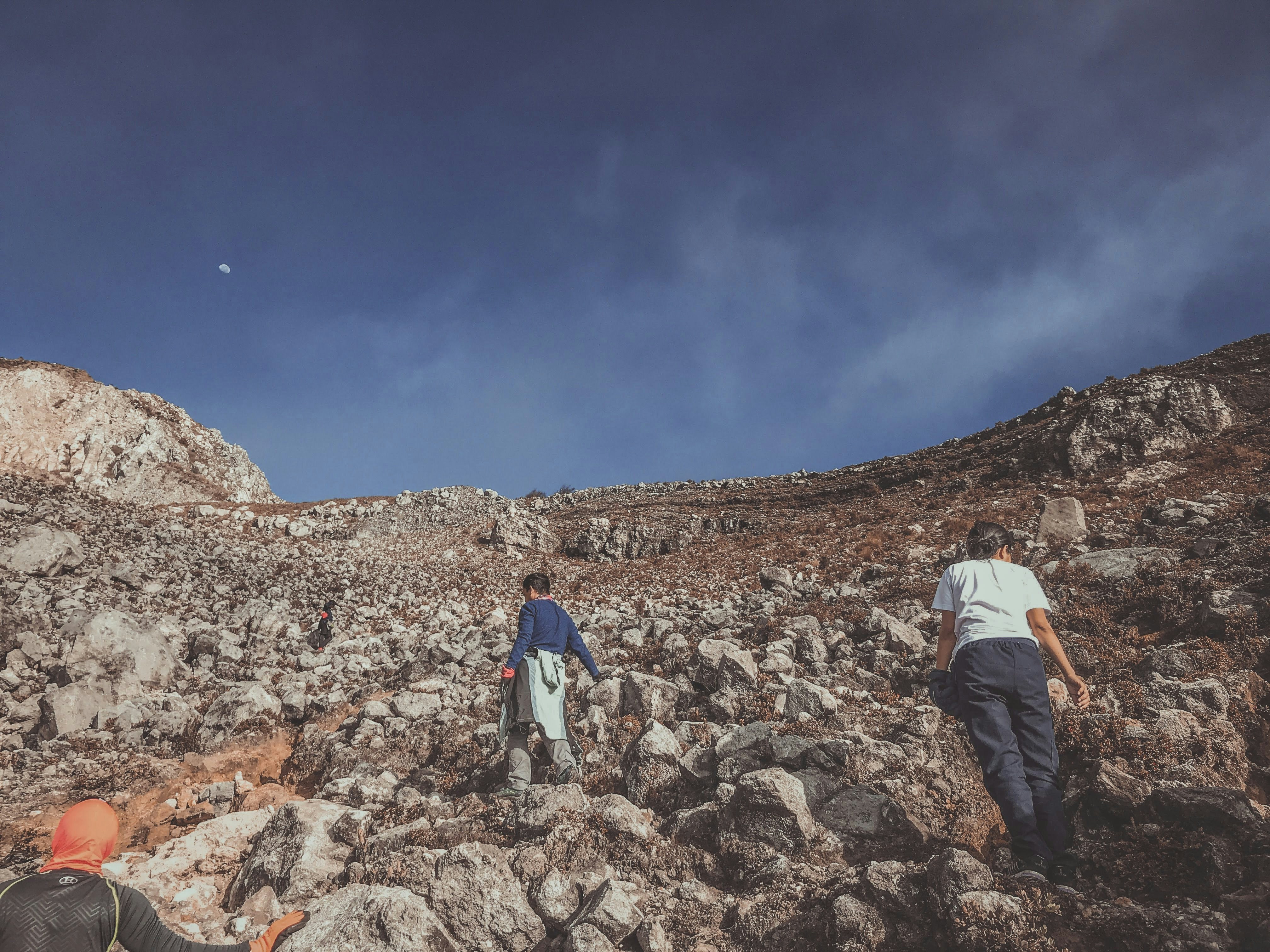
Source: Michael Rivera on Unsplash
-
Philippines
While the Philippines is most popular for its beaches, it's also a great hiking destination that should be considered for peak baggers. Mount Apo is a dormant volcano and the highest point on the islands. Mount Pulag is one of the most popular treks, where it seems like you could reach out and touch the clouds as they float by during sunrise! This trek includes four primary return trails to choose from. If you're up for a challenge, consider hiking to Mount Guiting-Guiting or Mount Baloy.
Take a hike on the wild side
Take a hike on the wild side
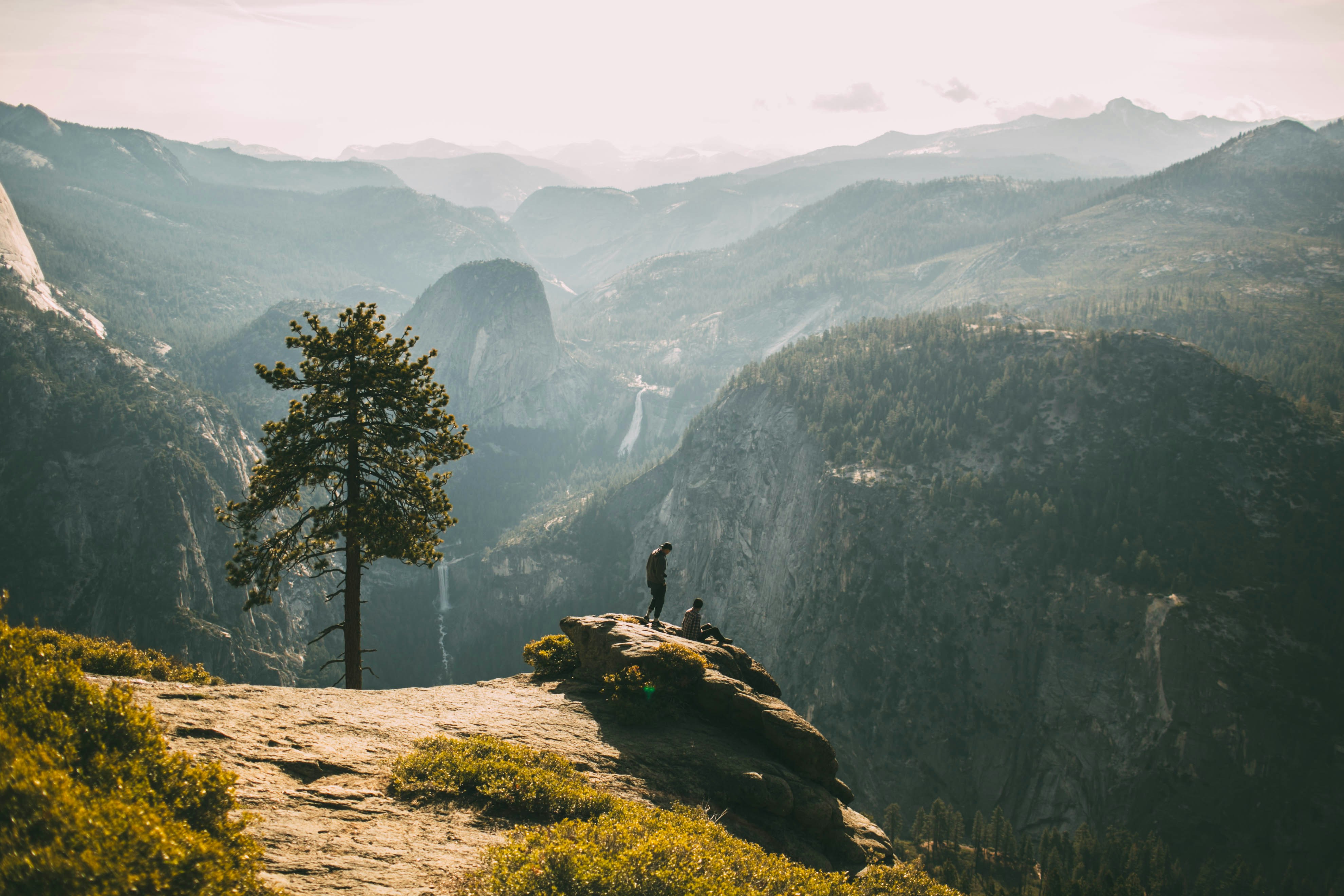
Source: Nathan Dumlao on Unsplash
Hiking is an excellent way to gain a different perspective of your destination during your travels. It's also an economical and sustainable travel activity that allows you to experience changing but gorgeous landscapes and terrains that would not be possible in an urban setting. Additionally, hiking helps boost physical and mental well-being and is an exceptional tool for de-stressing and disconnecting. Use this guide to find the perfect hike and have an experience of a lifetime!
Hiking Trails in the United States
Hiking Trails in Canada
Hiking Trails in Europe
Hiking Trails in Asia
Hiking Trails in Other Destinations
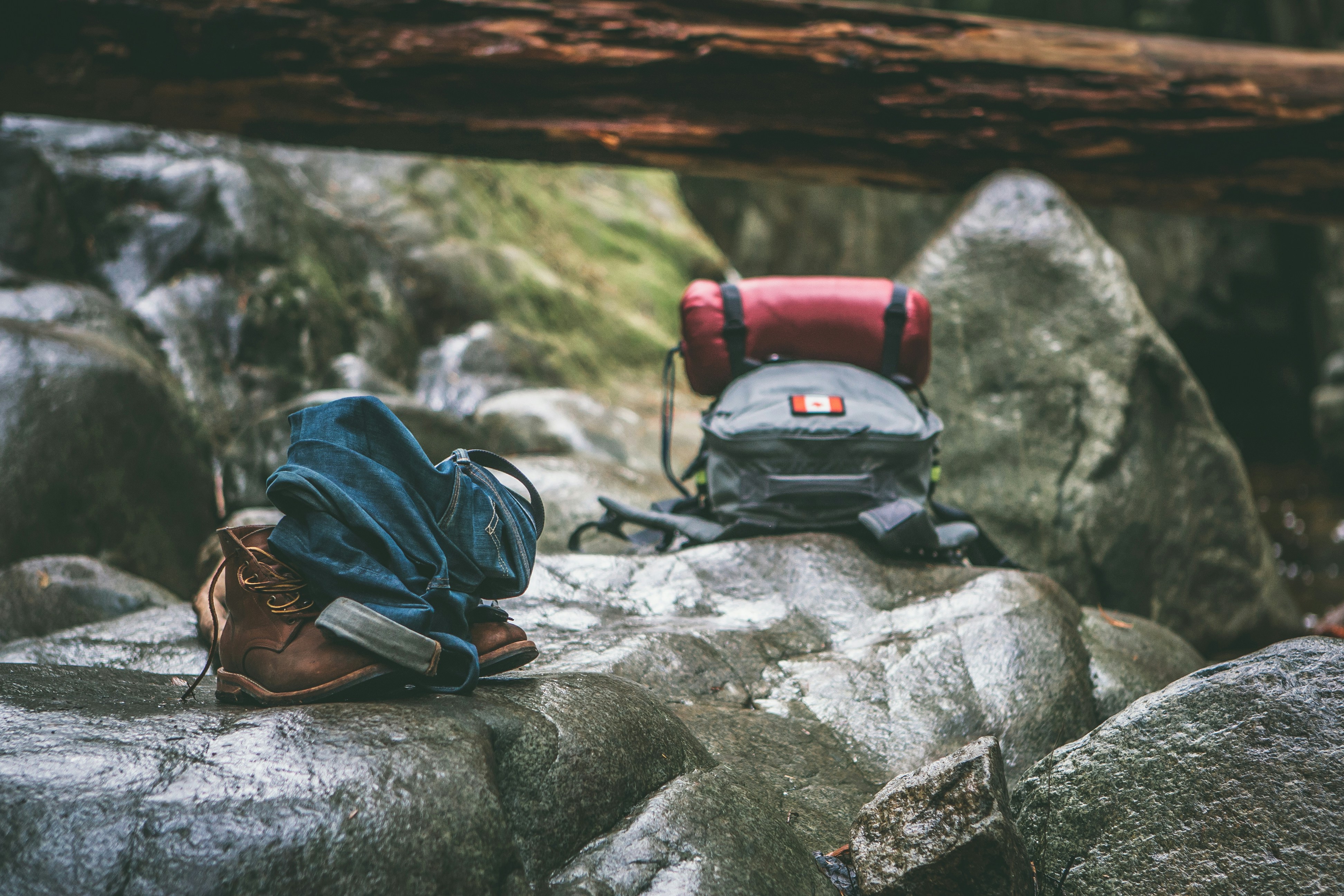




















































































































































Create an account to